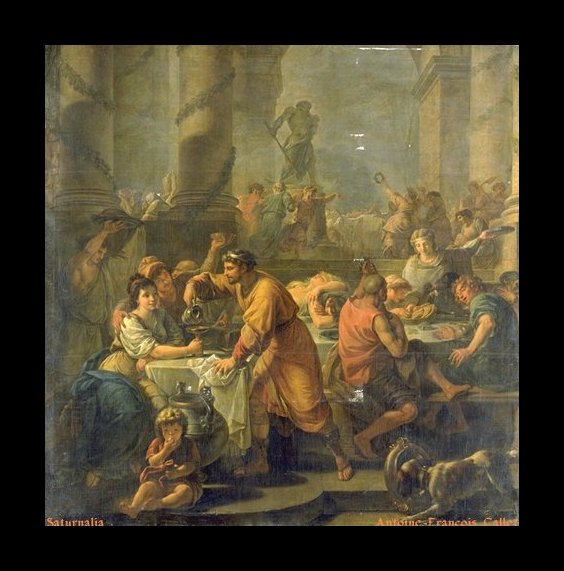Saturnalia, by Beverley Smith

Saturnalia
Saturnalia was an ancient Roman festival celebrated to honour the god Saturn. The celebration would start in mid-December and last from five to seven days, during which the courts and normal community business would be suspended.
The Collins Encyclopaedia describes Saturnalia as a “large and important public festival” that took place in ancient Egypt from as early as 3000 B.C. in the days of King Osiris and his wife, Isis. After the death of King Osiris, his wife Isis propagated that a full-grown evergreen tree had sprung up overnight from a dead tree stump, symbolizing the spurning forth unto new life of Osiris. On each anniversary of his birth, she claimed Osiris would visit the evergreen tree and leave gifts there. December 25 was the birthday of King Osiris.
Saturnalia was instituted by Romulus, the founder of Rome under the name “Brumalia” which means “Winter Solstice.” This huge festival was held from December 17-23; it was a time of merry-making described as “the best of days.”
During this celebration, there were no distinctions of rank or class; everyone was equal. Slaves were allowed to wear their masters’ clothing, masters served their slaves, and children and adults exchanged gifts such as dolls and candles.
The customary greeting for the occasion was “Io, Saturnalia” (pronounced “yo”). It is believed that the popular Santa Claus greeting, “Ho! Ho! Ho!” has its roots in its Saturnalia counterpart.
When parts of Rome began converting to Christianity, some of the pagan rituals, such as Saturnalia, were carried over as compromises to make the transition less challenging.
Much of the Christmas celebration today closely resembles the Saturnalia of ancient Rome. The decorated trees, the exchange of gifts, feasting, and the merrymaking that occur during Christmas are almost an exact re-enactment of this ancient festival that paid homage to the pagan deities and practices of this season, not the God of the Bible.

Comments are currently closed.